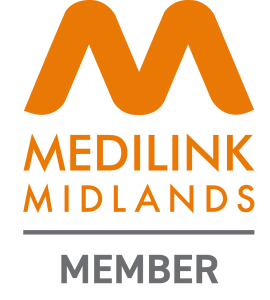How to Minimise Downtime During a Cleanroom Installation or Refurbishment
Production interruptions in pharmaceutical environments can have a severe financial and regulatory impact.
Operational downtime during cleanroom installation or refurbishment remains one of the most critical risks for pharmaceutical, biotechnology, and medical device manufacturers across the UK. Careful planning, precise coordination, and the use of modern construction methodologies can, however, reduce downtime by up to 60% when compared to conventional approaches.
Why Downtime Matters in Cleanroom Projects
Cleanroom downtime extends far beyond a temporary halt in operations. Production schedules are disrupted, delivery timelines slip, and in regulated industries, compliance risks can multiply quickly.
A lapse in environmental control or requalification delays can jeopardise product integrity and lead to costly revalidation cycles. For many facilities, maintaining controlled conditions throughout construction is a regulatory necessity.
Key Causes of Downtime During Cleanroom Installation
Several factors commonly drive cleanroom downtime:
- Construction or refurbishment delays caused by poor sequencing or site access limitations.
- HVAC and utility integration issues, especially when new systems must interface with validated infrastructure.
- Validation and requalification phases, which can extend project timelines if not pre-planned with precision.
- Structural or compliance issues discovered mid-project that necessitate redesign or rework.
Partnering with experienced cleanroom companies helps mitigate these risks by applying proven sequencing, testing, and commissioning strategies tailored to GMP environments.
Planning Ahead to Reduce Cleanroom Downtime
Effective downtime reduction begins in the planning stage. Comprehensive process mapping identifies vulnerable production pathways and helps anticipate how construction will intersect with ongoing operations. This can help teams to pre-empt contamination or compliance risks.
It’s essential to align the project schedule with manufacturing cycles, identifying low-impact windows for high-disruption work. For multi-product or high-throughput sites, this coordination prevents production bottlenecks and unnecessary requalification. Early engagement of cross-functional teams—spanning production, engineering, QA, and regulatory affairs—ensures that operational priorities are embedded into every design and construction decision.
Modular vs Traditional Construction: Which Minimises Downtime?
When evaluating how to minimise cleanroom downtime, modular construction frequently outperforms traditional methods. Modular systems allow pre-fabricated components—such as walls, ceilings, and integrated HVAC ducts—to be assembled off-site under controlled conditions. Once delivered, these components can be installed rapidly with minimal disruption to existing operations.
A zoned or sectional approach enables phased construction, maintaining validated areas online while isolated sections undergo refurbishment. Properly specified temporary partitions, pressure control, and contamination barriers maintain GMP compliance throughout.
For more on how modular approaches benefit other sectors, explore our overview of cleanroom installation projects across industries.
Strategies to Keep Operations Running During a Cleanroom Project
Even with optimal planning, maintaining environmental integrity during construction demands advanced control measures. Continuous HVAC balancing ensures pressure cascades remain within specification, while active particulate monitoring verifies performance in adjacent clean zones.
During partial occupancy, temporary gowning areas and clearly defined personnel/material flow paths prevent cross-contamination. In facilities managing volatile or hazardous materials, proper cleanrooms extraction systems are vital to maintain air quality during construction activity.
How Airology Minimises Downtime for Clients
At Airology Systems, we specialise in designing and delivering cleanroom projects that keep critical operations online. Our methodology is built around three core principles:
Planning
Early-stage engagement with your technical teams ensures every installation phase is mapped, validated, and risk-assessed before work begins.
Care
Our project teams operate under GMP-aligned protocols, ensurirg full segregation of work zones and strict adherence to contamination control standards.
Keeping to Schedule
By combining modular techniques with precise project management, we consistently deliver cleanrooms on time—with minimal or zero unplanned downtime.
Whether your focus is pharmaceutical manufacturing, biotech research, or the electronics industry cleanroom environment, Airology provides the expertise to ensure your operations stay compliant, efficient, and uninterrupted.
Next Steps: Planning Your Cleanroom Installation or Refurbishment
All cleanroom installations start with our Seven Key Decisions to make sure all requirements are included in the specification. These include custom cleanroom features such as lighting, humidity controls, and gowning areas.
Begin planning your new or refurbished cleanroom today. Answer our Seven Key Decisions or Contact Airology Systems for a quote.



